America is moving to decarbonize in multiple ways. Two of the biggest ways are moving toward electrified vehicles and electrified (heat pump) home heating systems. We’re a mechanical engineer & physician who have added heat pumps to four homes in multiple different ways. We’re not tied to any single technology, but as a former applications engineer and prescriber, we like to use what makes the most sense for a given situation. Here’s what we have learned about using heat pumps in homes that are located in areas with harsh winters. After we explain how much oil we saved we will equate that to vehicle gasoline savings.
Related Story: Make Your House a Hybrid - How a Heat Pump Can Save You More Fossil Fuel Than Switching to an EV

Why We Switched to Whole House Heating - AND KEPT Oil Heat As Well
Our primary residence is in Metro Boston. We get real winters here, but not super harsh ones with temps below 0F. In this area, the majority of homes use fossil fuel heat. Natural gas is not available in many areas, and in some areas it is street by street. Some houses have gas available, while others rely on oil. Our current home does not have access to gas heat, despite it being just one block away. So our home heating is forced hot water using baseboards and an oil furnace.
Related Story - Electricity Providers Say Existing Grid Cannot Manage Adoption Rate of EVs and Heat Pumps
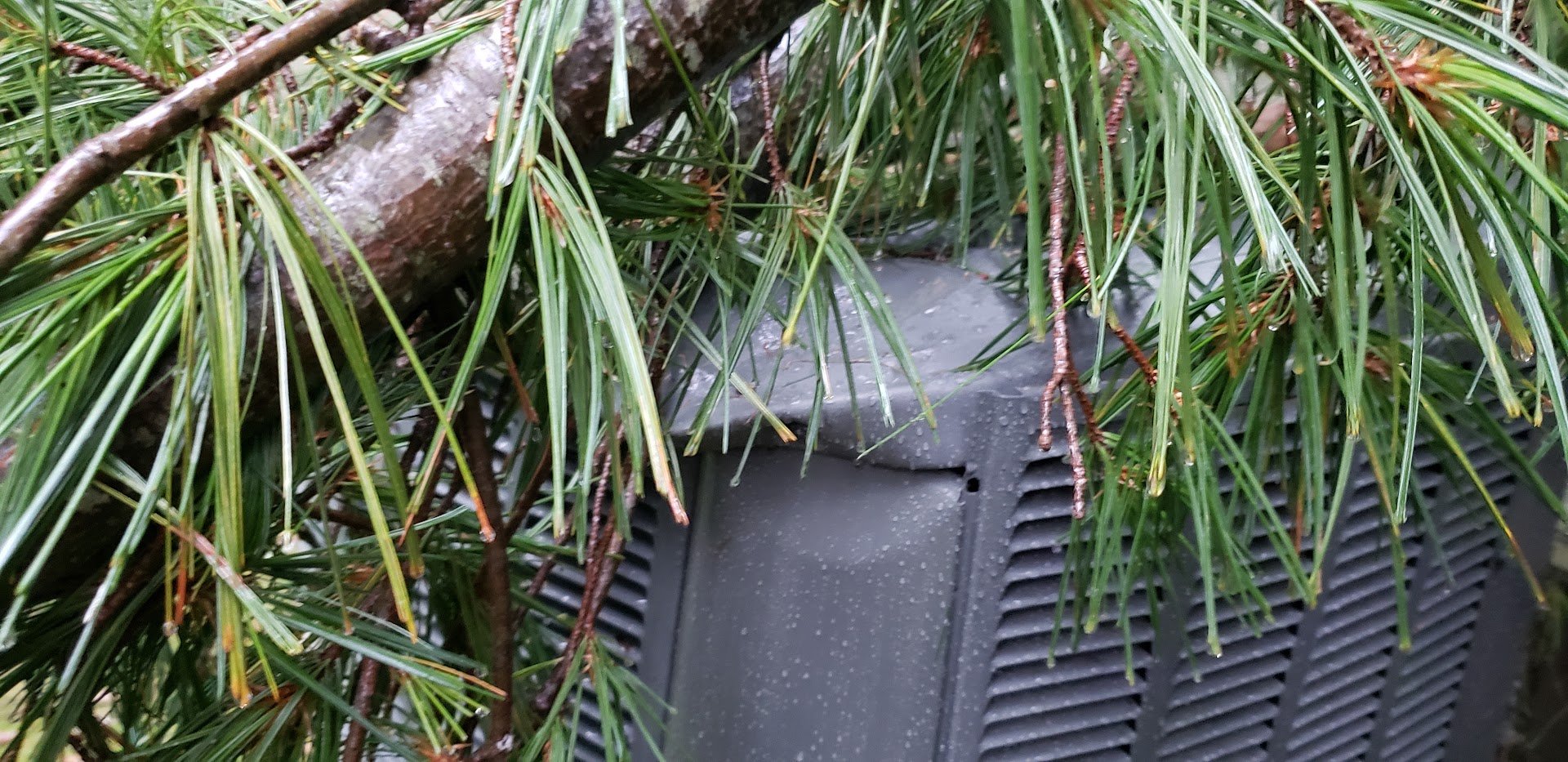
The house also had a ducted whole-house AC system with the main unit outside and an air handler in the attic. It was on its last legs when we purchased the house in 2022. Fortunately, a tree was kind enough to fall on the outside unit. It was destroyed, and our insurer paid us to have the entire system replaced. When we replaced it, our HVAC contractor (Christie Cooling and Heating) replaced the system with a heat pump. So now we can use the heat pump to heat and cool the entire house if we wish. We decided to keep the oil heat, and boy was that ever a great decision.
In addition to the whole house ducted system, we had previously added a single mini-split heat pump AC unit in the main living room of our 3,000-square-foot home. We did this because based on prior experience, we knew it would save a lot of oil and also because that particular room was not well cooled by the existing AC system. So, our home has both a whole house heat pump and also a single zone heat pump (mini-split) in the part of the home where we spend most of our waking hours.
How the Heat Pump Works - Plusses
The whole house ducted heat pump system works great in pretty much all regards. It is effective at cooling, and it is also effective at heating. It works very well as a heat system to about 20F. Below that it still heats, but it seems to run more and the house has cool areas. Tolerable, but not cozy. In spring and fall, it is brilliant.
How the Heat Pump Works - Minusses
The biggest downside to using the whole house heat pump system in the cold part of winter is the dryness of the hot air blowing on you. Despite having humidifiers on both living levels, the heat pump dries out the air so much, it is almost a health issue. We end up with dry skin, throats, and eyes, along with some minor respiratory issues. The oil heat doesn't dry the house out this way. It is “normal.” We may still run a humidifier in a bedroom at night when using oil heat, but not out of desperation, and not 24/7.
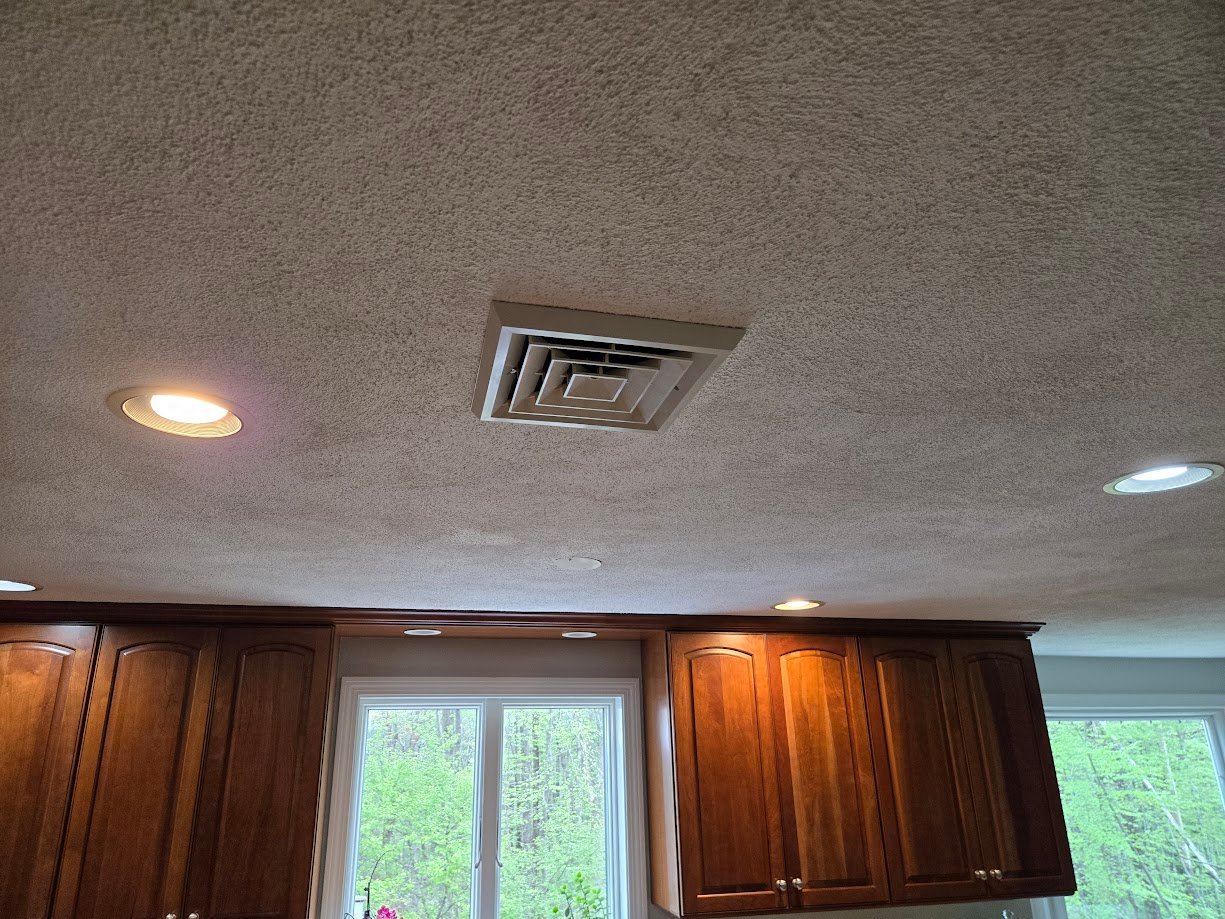
The second biggest downside to the whole-house heat pump system is that it blows hot air on you, which is unpleasant. The heat is distributed through ducting and vents that can be aimed and shielded, but the bottom line is that the air needs to be moving at pretty high flow rates to work. Given a choice, nobody wants to be in a room where the hot air is blowing.
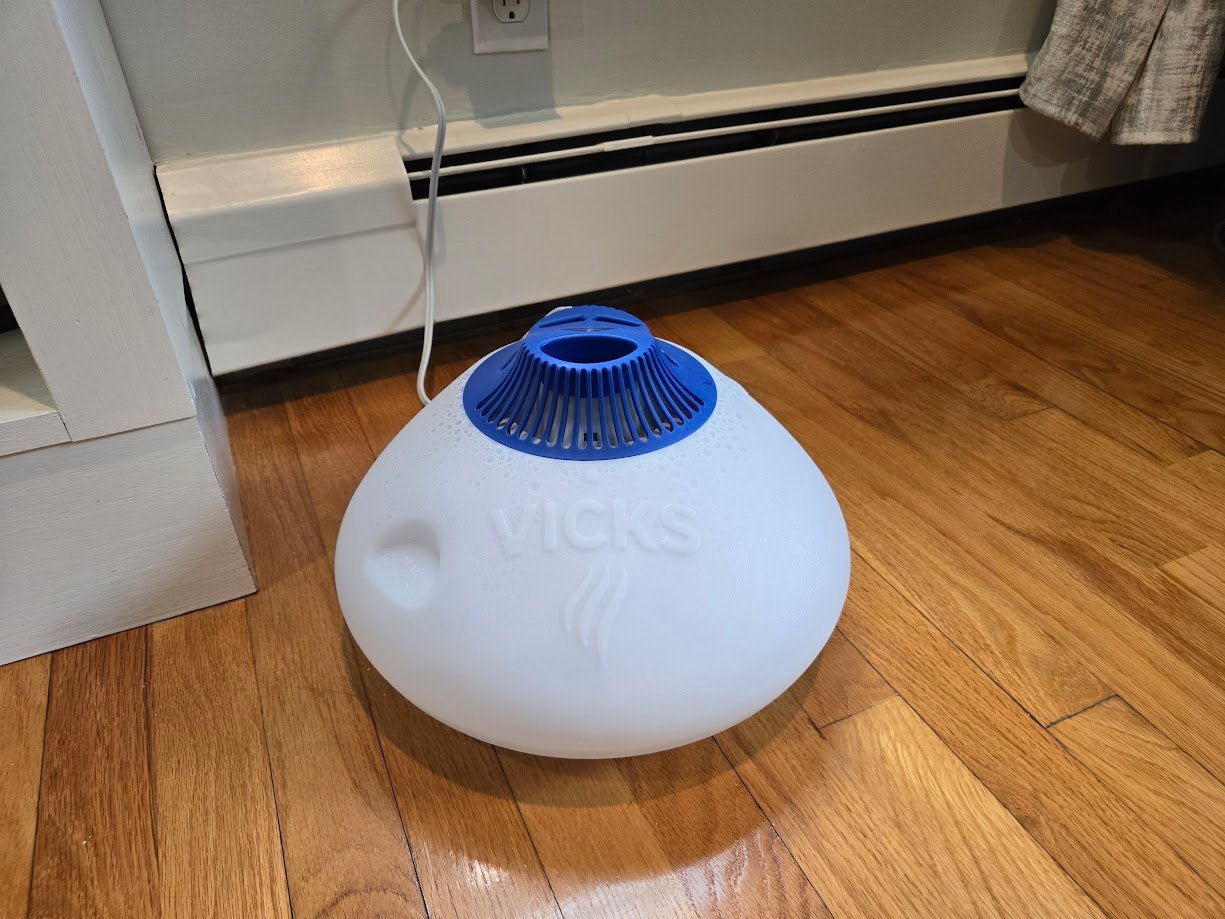
The third downside in our home is that the distributed heat pump air doesn’t have individual zones. So, if you want the upstairs bedrooms warm, you also need to make the other areas of the house warm. That’s inefficient. With the oil heat, we have multiple zones. This allows the oil heat to keep the various parts of the home at different temperatures. Individual mini-splits instead of a whole house system can help with this, and we will discuss that below. Also, if the home were being designed from scratch, there may be ways to make zones with ducted hot air.
Finally, the heat pump doesn’t work the same at all temperatures. Its results vary depending on the outside temperature. In spring and fall, the air from the ducts seems hot and it works very effectively, and very quickly. Therefore, the system doesn’t need to be blowing air all the time. It comes on, the room temperature rises, and then it shuts off. It cycles as needed. In cold winter, the heat pump runs longer, the air from the ducts seems less warm, and it cycles a lot. So, it still keeps the house warm, but it is working harder and the air is on you a lot.
Oil Savings From Using Heat Pumps
Our oil provider is also our oil heat and storage service company. We buy oil from them specifically because when our furnace breaks at 4 pm on Christmas Eve, we expect them to answer our phone call live and then to be at our door in 30 minutes to repair it. They have never let us down. There are less expensive places to buy oil. In fact, there are even state programs for those who wish to find the lowest-cost home heating fuel. But they don’t service oil equipment, and they are not responsible for ensuring safe leak-free oil storage in one’s home.
We asked our oil company (MacFarlane/Dunn) to tell us how much less oil we used this year. They had the records easily at hand, and they sent over a file showing my deliveries compared to the past few years. Our new whole-house heat pump arrived in the fall, so we know it had a full winter to do its magic. The mini split was installed the prior spring.
In the two years before we installed the two heat pump systems, our home used between 900 and 950 gallons of oil. After we added the heat pumps, our oil usage dropped to 520 gallons. Therefore, we saved about 400 gallons of home heating oil (per year) by using the heat pumps.
It’s important to know that we also make hot water with our oil system. It is also important to know that after we experimented with the whole house heat system, we stopped using it to make heat for our home on cold winter days. The oil heat is quieter, more comfortable, and does not pull all the moisture out of the air. Our oil heat has multiple zones and it also has a timer. So, we adjust the temperatures quite a bit. In the zones going unused the heat barely runs. We set it to 60, and the temperature generally stays above that setting. At night, we drop the temperatures from around 70F to around 63F because we like sleeping in the cooler temps. Now, remember, it’s only 70F in the area of the house we are occupying. Our oil heat is controlled by Nest and other similar smart thermostats that have proximity sensors and timers.
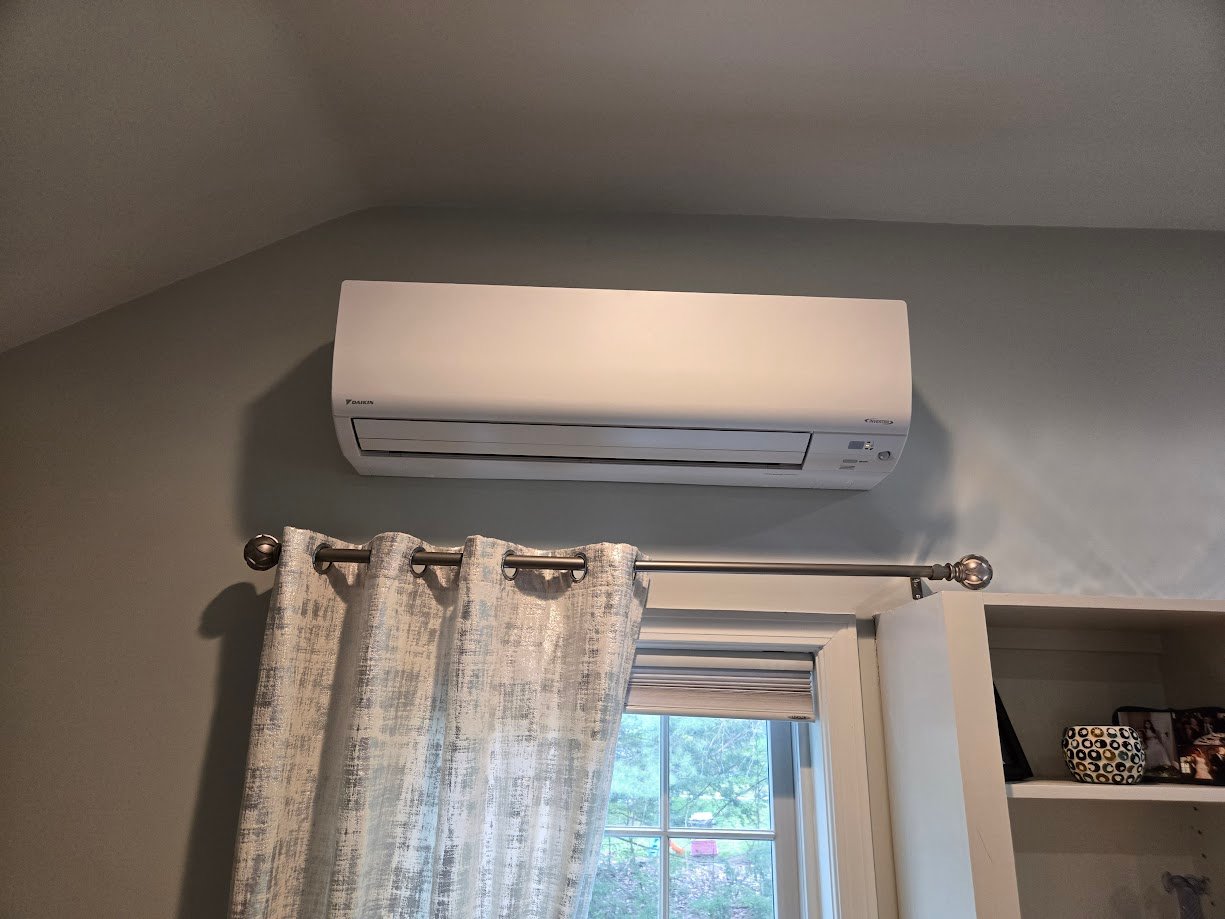
The biggest plus is our first-floor main living space mini split. That unit is timed to come on early morning, when the outside air is at its winter lows, and before we get up. We let it run for a few hours prior to waking and it warms the entire first floor. The oil heat then takes over and makes the house comfy all day zone by zone. We credit the single mini split for much of our oil savings, though in spring and fall we do and will use the whole house system for warmth when it is between 45F and 65F outside.
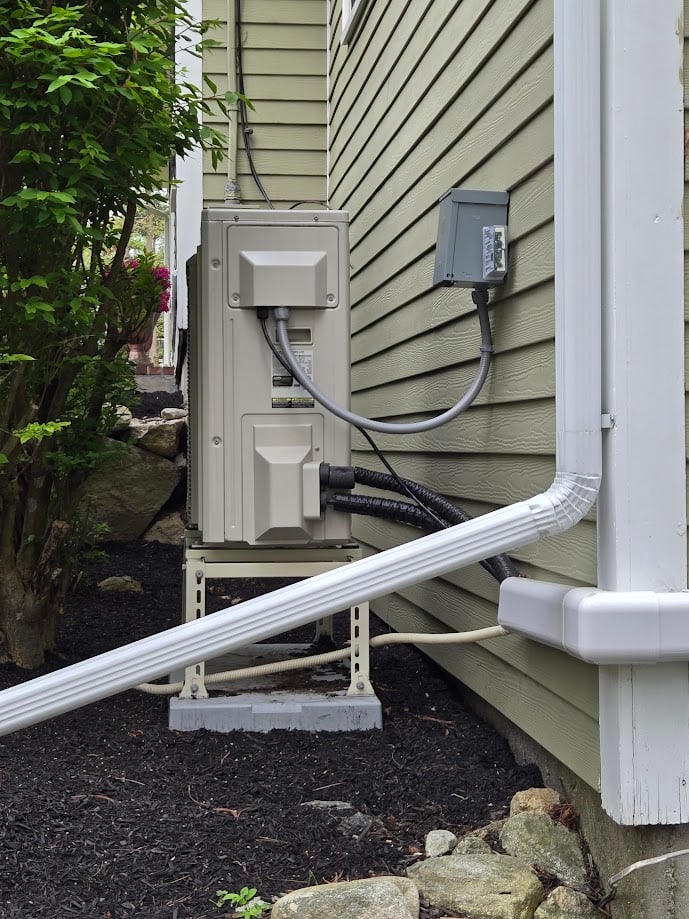
How Much Do Heat Pumps Cost?
We’ve installed many mini splits and they are pricey. The cost varies, but the last two we installed cost around $8K to $9K including the dedicated high-amperage electrical circuit they require. The ones we own now have apps that let us control them easily anywhere in the world. That’s super handy. Our second mini-split unit is in a cabin in a remote part of New Hampshire. We can turn it on when we head up for a weekend of winter house camping in winter, and we can use it to warm the cabin up before we arrive in spring and fall.
The whole house system we purchased with our insurance money rounded to $20,000. State rebates can help take some of the sting out of that cost.

Money Savings From Using Heat Pumps
It’s not very easy to calculate how much money we saved by running heat pumps. The primary reason is that John tests electric vehicles off and on throughout the year. One week I have a hybrid or conventional vehicle, the next I have a battery-electric or plug-in hybrid electric vehicle. The EVs suck up a lot of energy, so it is not possible to just look back at our prior electric bills and figure out how much more we used. Also, our electric cost is super high in Metro West Boston. We pay $0.32/kWh now and we were paying $0.36. Did we save money on energy? If we did, it is not meaningful. Yes, 400 gallons of home heating oil has a value of around $1,600, but our electric bills jumped from under $100 to the mid-hundreds. Compared to the $28K we spent on heat pumps, the energy savings are meaningless to us.
How Many Miles Can Our Car Run On 400 Gallons of Fuel?
Our newest car is a 2024 Toyota Venza that gets 39 MPG. Multiple 39 MPG times 400 gallons and one gets 15,600 miles. Wow! By switching to heat pumps we effectively cancelled out all the fossil fuel carbon emitted by our car! We drive that car far fewer miles than that. Typically, we cover about 11,000 miles per year. What a great way to reduce carbon and maybe save some money in the process over time.
Conclusion and What We Learned
What we learned by switching to a whole house heat pump system is the following:
-It is unlikely to save those who have high electricity costs much money
-Whole house heat pumps dry out the air too much for continuous cold winter use
-Having warm air blowing on you is not pleasant
-A single mini-split is much more cost-effective if your aim is saving money and carbon
-The heat pump’s operation is not the same when it is very cold outside
-Decommissioning the oil system would have been a massive mistake
-The annual savings in oil are more than what our car consumes in a year
Heat pumps are a great way to offset your home heating oil usage. However, they are not equal in terms of comfort to forced hot water oil systems, nor are they cost-effective if you already own an oil system. Our whole-house heat pump system worked for us thanks to a handy tree, but paying out of pocket to add one seems crazy to us financially. Mini-splits, by contrast, make sense and do reduce oil usage significantly with little downside.
If you have added heat pumps to your home tell us about your experiences in the comments below. Feel free to tell us about your green vehicle as well if you wish.
Torque News writer Hande Tuncer also contributed to this story. Images by John Goreham.
John Goreham is an experienced New England Motor Press Association member and expert vehicle tester. John completed an engineering program with a focus on electric vehicles, followed by two decades of work in high-tech, biopharma, and the automotive supply chain before becoming a news contributor. In addition to his eleven years of work at Torque News, John has published thousands of articles and reviews at American news outlets. He is known for offering unfiltered opinions on vehicle topics. You can connect with John on Linkedin and follow his work at our X channel. Please note that stories carrying John's by-line are never AI-generated, but he does employ Grammarly grammar and punctuation software when proofreading.











